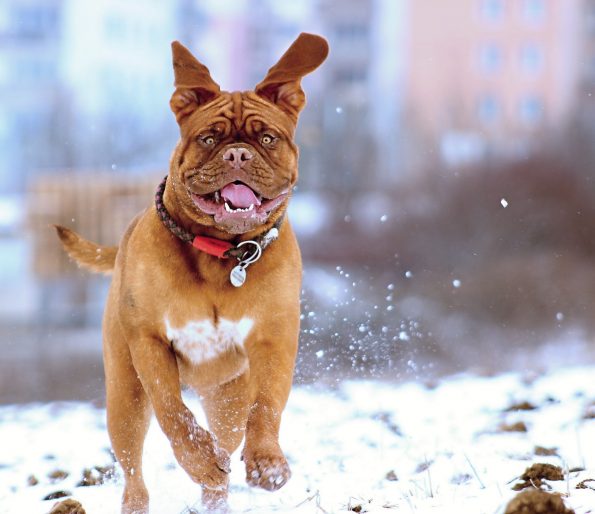
The first flakes of snow are starting to fly and Oakville residents are digging out their hats, jackets, and boots. Many dogs are feeling the chill, too.
Pet owners wonder what, if anything, they should do to ensure their dog’s comfort in winter weather. The answer is: it depends.
Some dogs have a thick coat and no winter clothing is needed – think Huskies, Labs, and Golden Retrievers. Thinner-framed dogs, smaller breeds, and short-haired dogs may get cold more easily such as Poodles, Dobermans, Pointers, Greyhounds, Terriers, and Chihuahuas. For the most part, dogs that are not comfortable in the cold weather will signal their need for additional clothing by resisting trips outdoors or shivering. A cozy winter jacket will make these dogs much happier when outdoors in the winter.
The amount of time you plan to spend outside will also factor into the decision whether a winter jacket is needed. Consider using a coat if you plan to be outside for more than 30 minutes, or if your dog will be inactive when outside vs running around and generating heat.
What about boots?
Another consideration in cold winter weather is paw protection. Cold snow, sharp ice, and salt or other chemicals used to melt snow can all be irritating to the paws. In addition, longer haired dogs get snowballs stuck in the hair between their digits.
Boots provide protection from all of these things, if your dog accepts them. You may need to spend some time with your dog to gradually desensitize him to the feeling of wearing boots – try them for short periods of time indoors first, and give lots of reward and praise when your dog accepts wearing them.
Alternatives to boots come in the form of products applied to the paw pads. Products like cooking spray or Vaseline can be used to repel snow and provide a protective barrier – just remember to wipe it off the paws after returning inside! Wax based paw protection products are an alternative option. Some examples include Pawmagik and Musher’s Secret. There should be no need to wipe these off after returning from outside. If you’d like to try a product like this, let us know and we can order one for you!
If your dog has long hair on her paws, particularly between the digits, keeping the fur clipped short will reduce the amount of snow that sticks. This may be best left to a professional groomer. We can always do this for you when your dog is in for grooming or a nail trim – just ask!
Again, larger dogs and dogs that spend lots of time outside in the winter will likely adapt and be just fine without any paw protection in the winter. If your dog is happy to walk outside with no limping or lifting the paws, there is likely no need for any additional protection.



